Discover Lucerne: A Timeless Journey
Join us for a captivating free walking tour of Lucerne's Old Town, where history, culture, and stunning architecture come together in a vibrant tapestry of experiences.
Time
2 Hours
Stops
9 Places
Distance
2.4 km
Chapel Bridge (Kapellbrücke)
Start your tour with Lucerne's iconic Chapel Bridge, a 14th-century wooden bridge adorned with beautiful paintings that narrate the city's history.
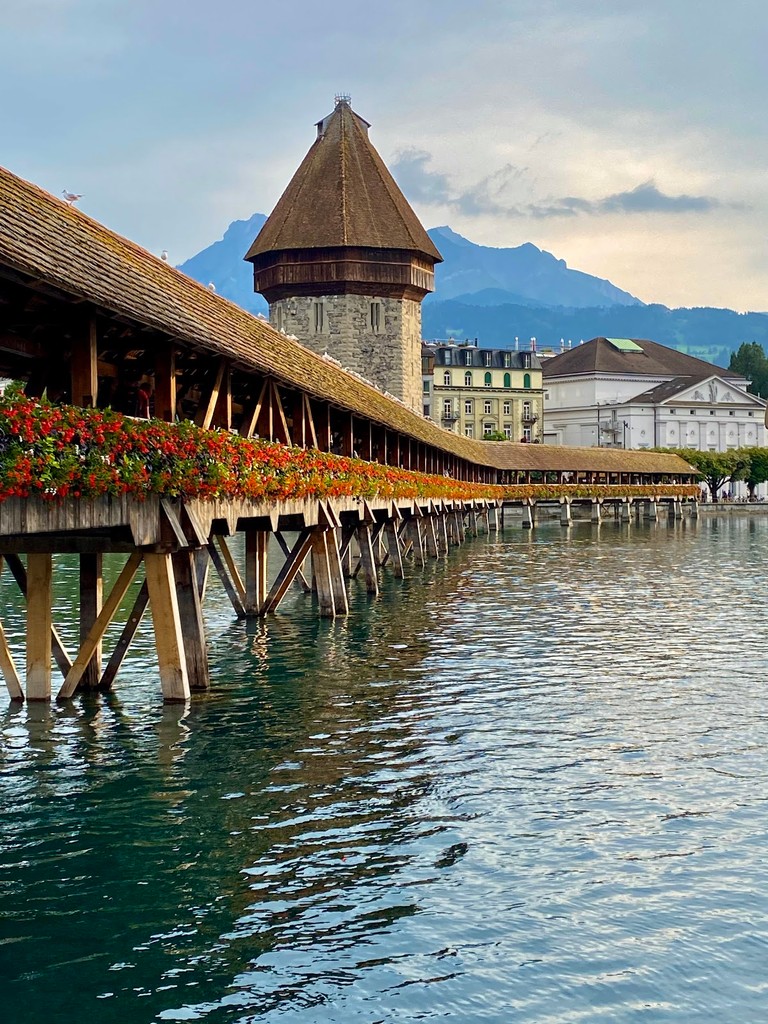
Chapel Bridge (Kapellbrücke) (Source: Google Maps)
Chapel Bridge, or Kapellbrücke, is Lucerne's most famous landmark, dating back to the 14th century. This wooden bridge, adorned with a series of paintings depicting the city's history, originally served as a vital link between the old and new parts of the city. The bridge's unique design features a gabled roof and a series of triangular paintings, which were created by local artists and narrate the stories of Lucerne's past. Unfortunately, much of the bridge was destroyed by a fire in 1993, but it has since been meticulously restored, preserving its historical significance. Today, it stands as a symbol of Lucerne's resilience and charm, attracting visitors from around the globe who come to admire its beauty and learn about the city's rich heritage.
Jesuit Church (Jesuitenkirche)
This beautiful Baroque church, located near the Reuss River, is a highlight of Lucerne's spiritual and architectural heritage.
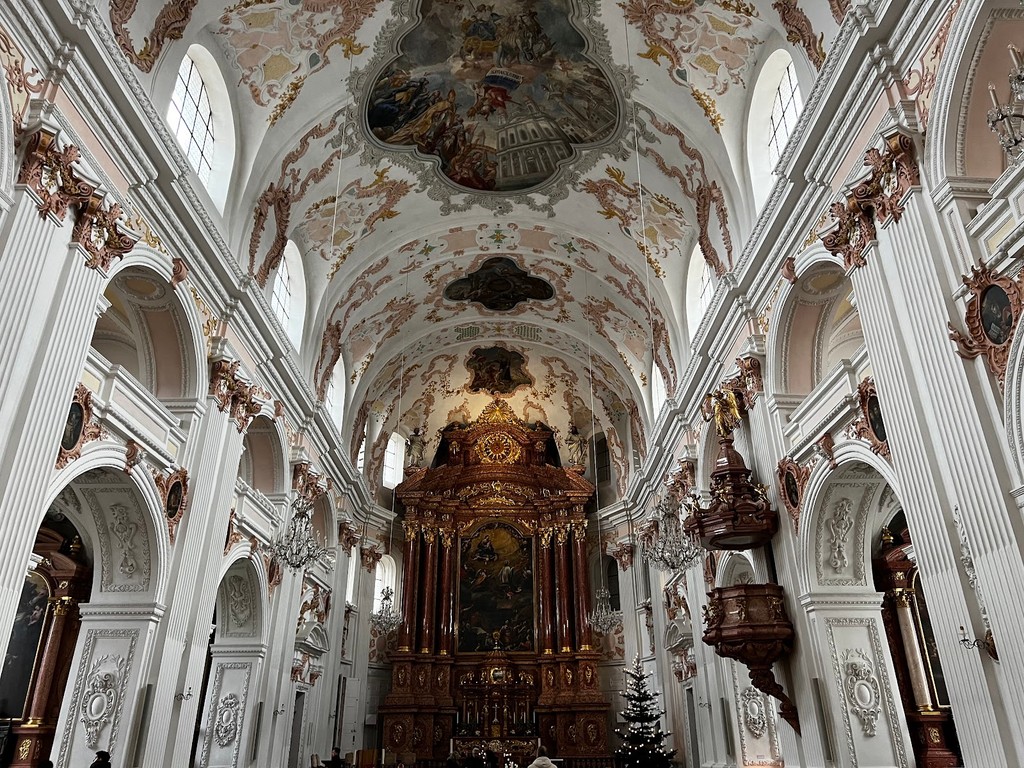
Jesuit Church (Jesuitenkirche) (Source: Google Maps)
The Jesuit Church, or Jesuitenkirche, is a stunning example of Baroque architecture in Lucerne, completed in 1677. It is renowned for its ornate interior, featuring elaborate frescoes, intricate woodwork, and a striking altar. The church was built by the Jesuits as a center for their educational and missionary work, reflecting the Catholic Counter-Reformation's influence in Switzerland. Its twin towers rise majestically above the Reuss River, making it a prominent feature of the city's skyline. The church is not only a place of worship but also a cultural landmark, hosting concerts and events that showcase its exceptional acoustics. Visitors are often captivated by the harmonious blend of art, architecture, and spirituality that the Jesuit Church embodies.
Rathaus Brauerei
Pause for a refreshment at this local brewery, where you can enjoy traditional Swiss beer brewed on site.
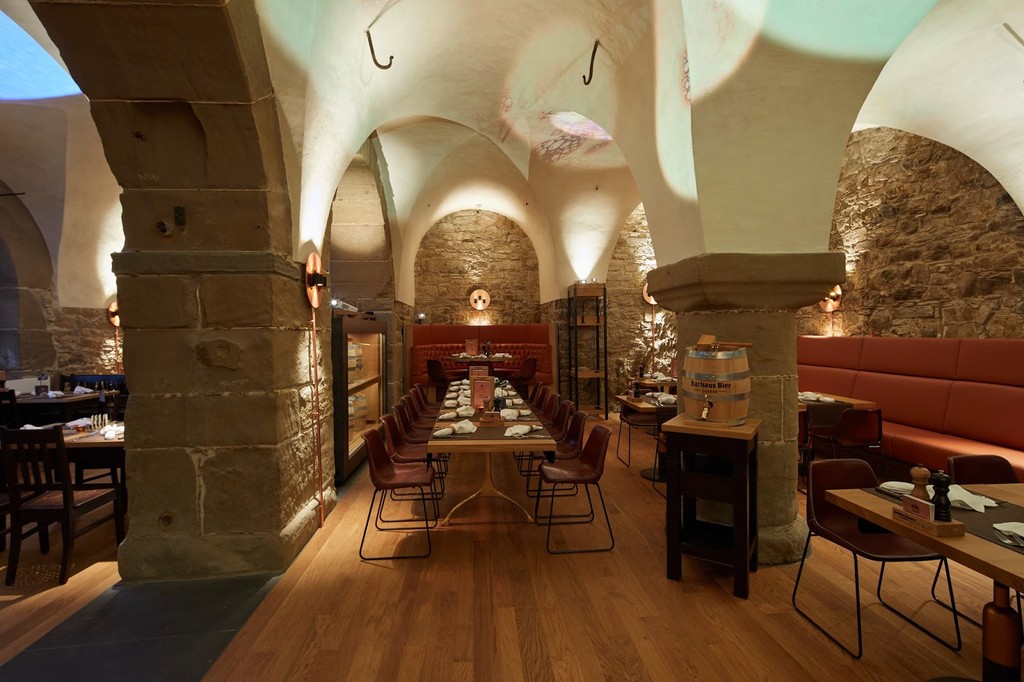
Rathaus Brauerei (Source: Google Maps)
Old Town Hall (Altes Rathaus)
A short walk from the bridge, this Renaissance-style building showcases Lucerne's civic pride and historical architecture.
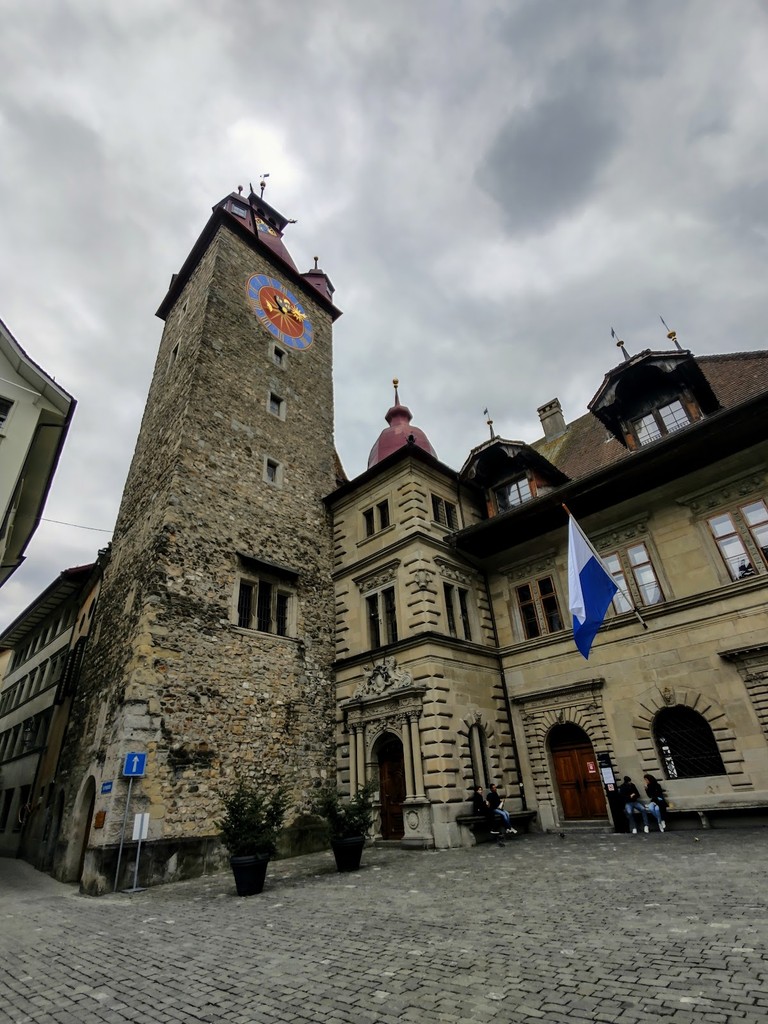
Old Town Hall (Altes Rathaus) (Source: Google Maps)
The Old Town Hall, or Altes Rathaus, is a Renaissance-style building that showcases Lucerne's civic pride and historical architecture. Built in the late 15th century, it features a distinctive façade adorned with colorful frescoes that depict allegorical figures and scenes from the city's history. The building served as the seat of the city council and played a crucial role in Lucerne's governance. Its impressive architecture, characterized by ornate windows and a grand staircase, reflects the prosperity of the city during the Renaissance period. Today, the Old Town Hall stands as a testament to Lucerne's rich political history and is often used for cultural events, exhibitions, and guided tours, allowing visitors to appreciate its historical significance in the heart of the Old Town.
Weinmarkt
Stroll to Weinmarkt, the heart of Lucerne's Old Town, where you can admire medieval buildings and the vibrant atmosphere of this historic square.
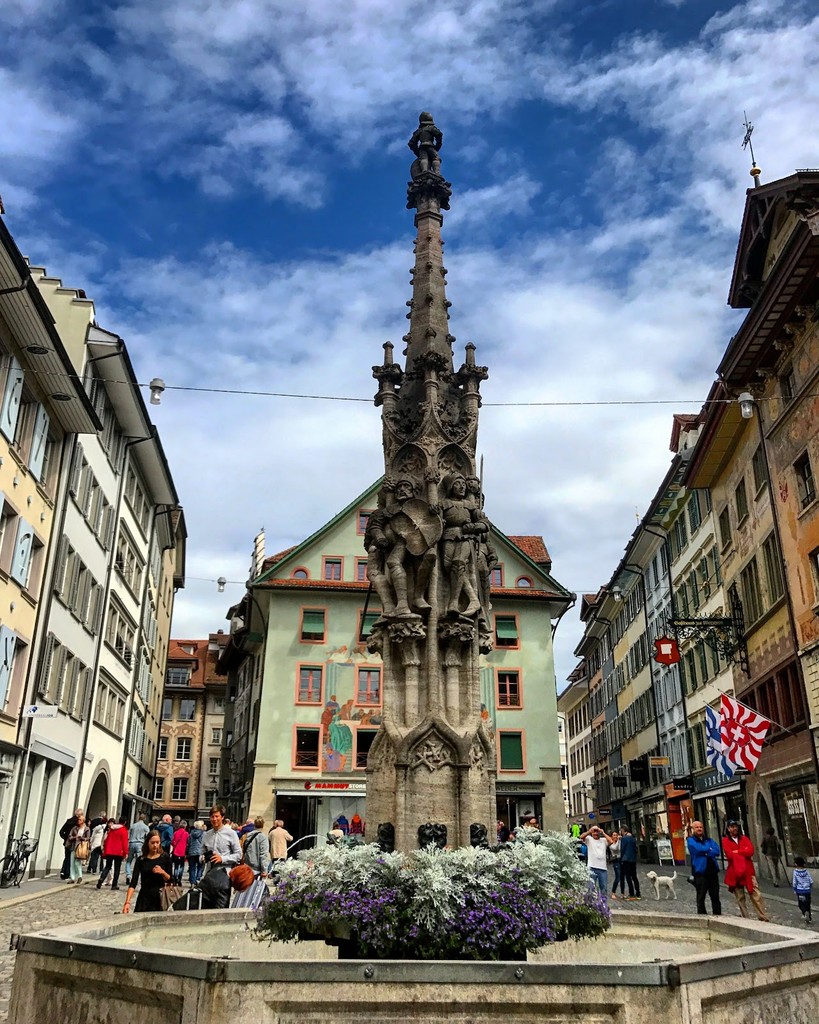
Weinmarkt (Source: Google Maps)
Weinmarkt, translating to 'Wine Market,' is a vibrant square in the heart of Lucerne's Old Town, surrounded by beautifully preserved medieval buildings. This historic square served as the center for the wine trade in the Middle Ages and continues to be a lively gathering place for locals and tourists alike. The architecture around Weinmarkt showcases a mix of styles, with colorful facades and intricate details that reflect the city's rich history. At the center of the square stands a charming fountain, which adds to the picturesque atmosphere. Today, Weinmarkt hosts various events, markets, and festivals, making it a hub of cultural activity. Visitors can enjoy the lively ambiance, explore nearby shops, and indulge in local cuisine at the nearby cafés, all while soaking in the historical significance of this enchanting square.
Water Tower (Wasserturm)
Adjacent to the Chapel Bridge, the Water Tower once served as a prison and treasury and is an enduring symbol of Lucerne.
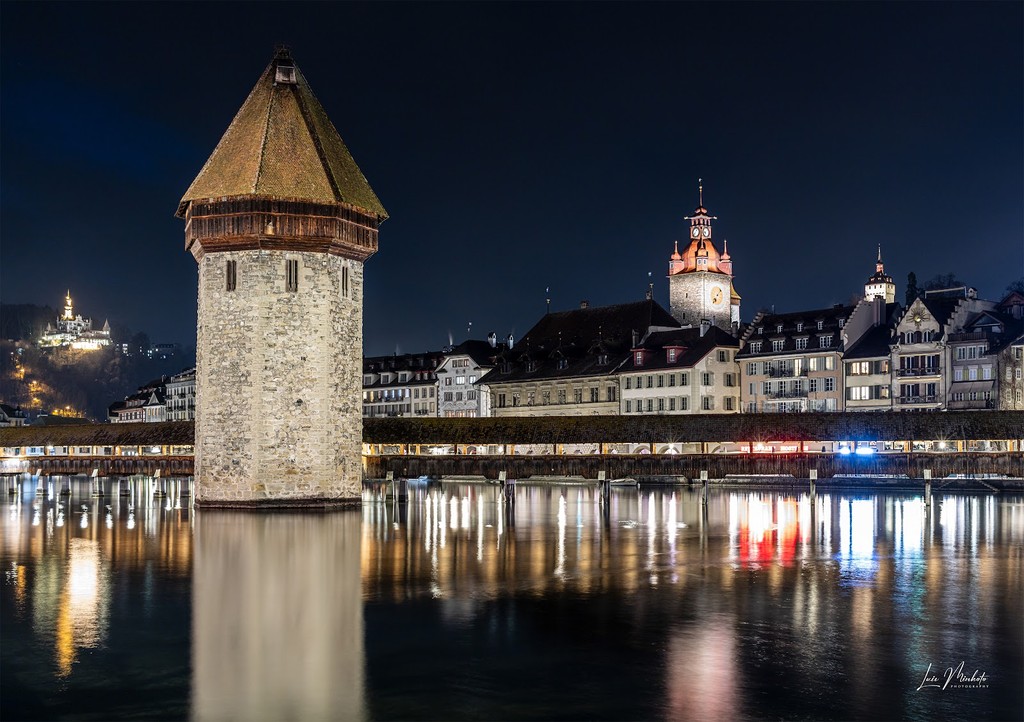
Water Tower (Wasserturm) (Source: Google Maps)
The Water Tower, or Wasserturm, is one of Lucerne's most recognizable landmarks, originally erected in the 14th century as part of the city’s fortifications. This octagonal tower has served multiple purposes throughout its history, including as a treasury, prison, and watchtower. Its distinctive design, featuring a pyramid-shaped roof and a stone base, is complemented by its location adjacent to the Chapel Bridge. The tower is adorned with various historical inscriptions and has been a source of inspiration for artists and writers over the centuries. Today, the Water Tower stands as a symbol of Lucerne's historical fortifications and offers stunning views of the surrounding landscape. Visitors often enjoy taking photographs of this iconic structure, which reflects the city's medieval past and architectural beauty.
Museggmauer (Musegg Wall)
Head towards the Musegg Wall, a well-preserved part of Lucerne's old town fortifications with several towers offering panoramic views.
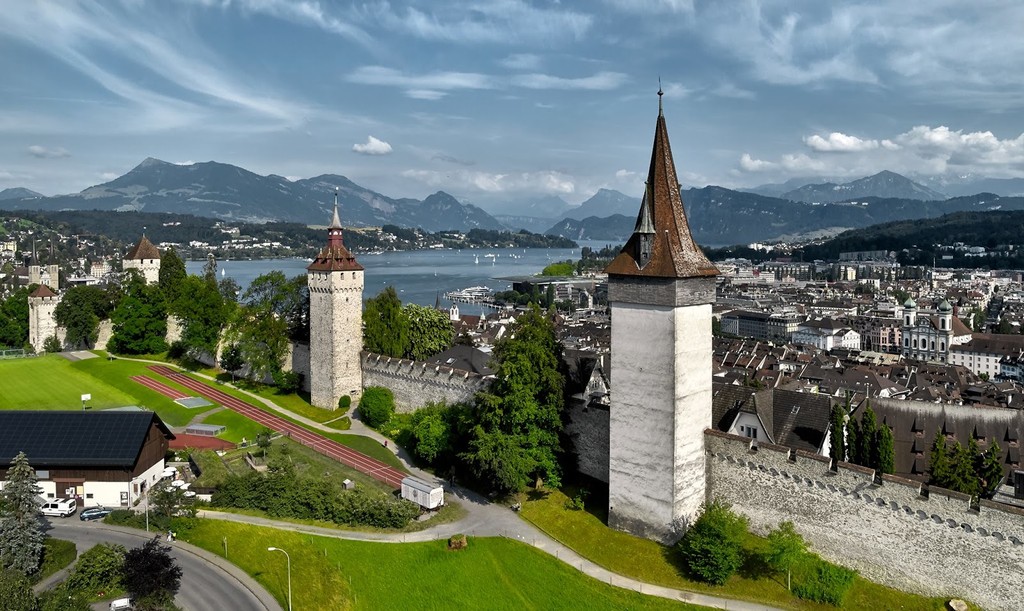
Museggmauer (Musegg Wall) (Source: Google Maps)
Museggmauer, or Musegg Wall, is a well-preserved part of Lucerne's medieval fortifications, dating back to the 14th century. This impressive wall stretches for over 800 meters and features several towers, some of which are open to the public. The wall was built to protect the city from invaders and showcases the military architecture of the time. Each tower has its own unique history and purpose, with some serving as lookout points and others as storage for weapons. Visitors can climb the towers for panoramic views of Lucerne and the surrounding mountains, providing a unique perspective on the city's layout. Museggmauer is not only a historical monument but also a popular spot for walking and exploring, allowing visitors to connect with Lucerne's rich history while enjoying the beautiful scenery.
Löwendenkmal (Lion Monument)
Conclude your tour at the poignant Lion Monument, a tribute to the Swiss Guards who were massacred during the French Revolution.
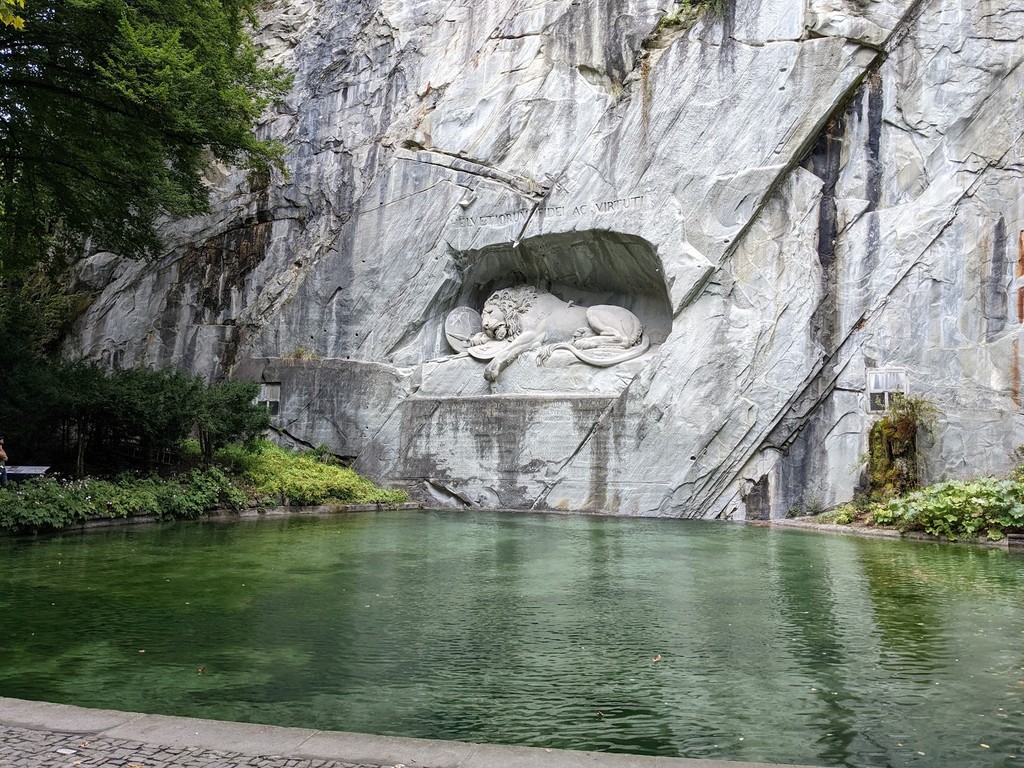
Löwendenkmal (Lion Monument) (Source: Google Maps)
The Lion Monument, or Löwendenkmal, is a poignant tribute to the Swiss Guards who were massacred during the French Revolution in 1792. Carved into a sandstone rock face, the monument depicts a dying lion, symbolizing bravery and sacrifice. The work of Danish sculptor Bertel Thorvaldsen, it was commissioned by a group of Swiss expatriates in Paris and unveiled in 1821. The lion's expression of pain and courage has made it one of the most iconic sculptures in Switzerland, attracting visitors from around the world. The monument is set in a tranquil park, providing a reflective space for visitors to honor the memory of the fallen guards. The Lion Monument serves as a powerful reminder of the sacrifices made for freedom and has become a symbol of Swiss patriotism and resilience.
Max Chocolatier
End your exploration with a sweet treat at Max Chocolatier, known for its exquisite handmade Swiss chocolates.
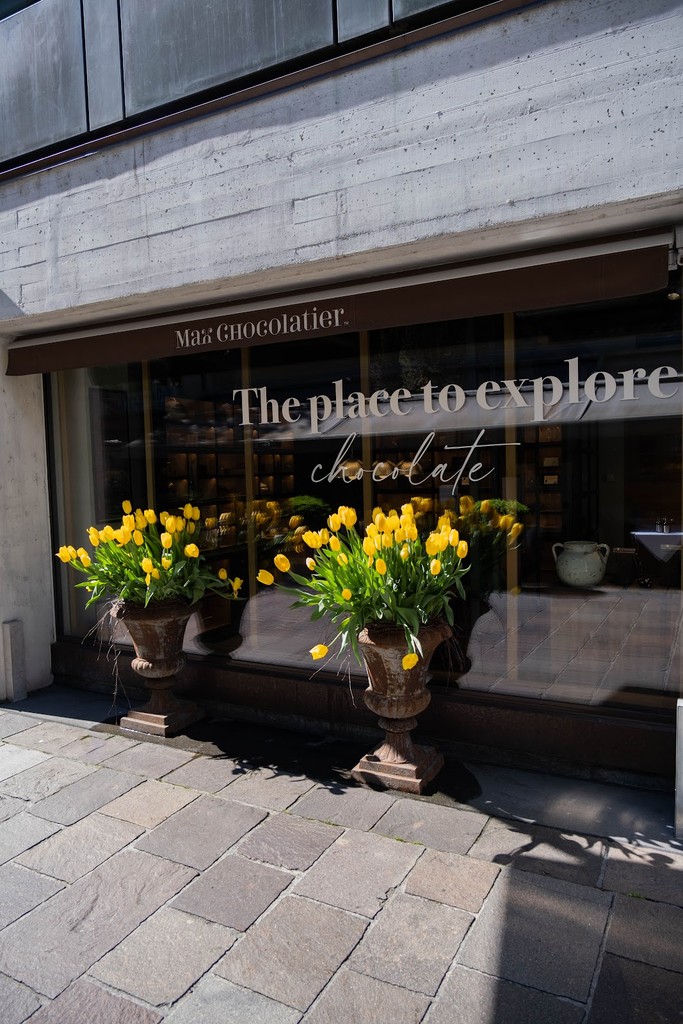
Max Chocolatier (Source: Google Maps)

Your travels, your rules.
Create your own Free Walking Tours.
Set your preferences, distances and anything you want to do or see.
Completely free, no payment required.